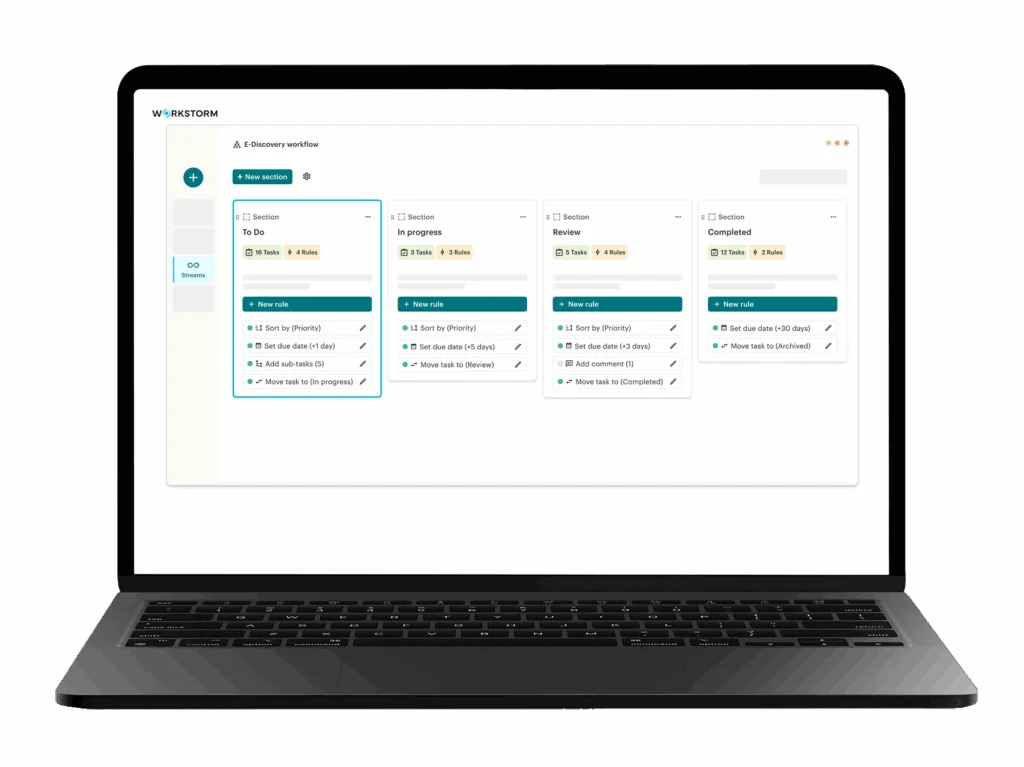
ATD Trading Floor
Before co-founding Workstorm, I was part of the team at Automated Trading Desk (ATD), a high-frequency trading firm that pioneered technology and artificial intelligence to revolutionize the trading industry. As with any complex project, collaboration was critical.
When the company began planning a move to a new location in the early 2000s, an exciting opportunity presented itself. The team had the chance to customize our new 68,000-square-foot space to match how we worked.
To optimize collaboration, we seated employees in small pods based on their roles and teams. Areas were created for designated purposes, such as meeting spaces and quiet developer zones. Upon move-in, the impact was immediate. Simply put, the space made it easier to do our jobs.
For me, the experience was an early lesson on how a workspace impacts the team using it. I learned that the place where people work should play a tangible role in helping them accomplish their mission.
I believe this lesson applies in the era of remote work, too – both for remote teams and for those who manage them.

ATD Atrium
Solving the New Leadership Challenges of Remote Work
Just like the ATD team was once challenged to envision an ideal physical work environment, business leaders and managers are now being challenged to build virtual workspaces that meet evolving organizational needs. With the majority of businesses planning to shrink their office spaces in light of the ongoing pandemic, according to a recent Cisco survey, getting remote work right has taken on a new urgency.
Managers are now tasked with keeping their finger on the pulse of a team they can’t see. They need to ensure productivity and find ways to foster strong teams and bonds between colleagues. Without the option to swing by an employee’s desk for a check-in, leaders and managers need new ways to oversee employee activities and understand what they’re working on.
At Workstorm, we believe that an ideal digital workplace is built to empower every employee to succeed, from anywhere – managers included. We’ve taken steps to ensure our collaboration platform enables the visibility needed to lead distributed teams successfully.
But while the right technology is essential, flourishing in the remote work era requires a strong company culture and healthy work environment as well. A thoughtful approach to the digital workplace helps ensure employee effectiveness and satisfaction.
Here are three best practices based on our own experiences at Workstorm, both as a remote work solutions provider and a fully remote workplace ourselves.
- Use frequent virtual events to strengthen your company culture. Daily stand-up meetings create a sense of continuity. Monthly casual get-togethers can replace social functions, such as happy hours or group lunches. Important milestones can be celebrated with quick touch-base meetings. You should always seize the opportunity to bring staff together and foster strong connections.
- Empower teams to organize themselves. Employees should be free to structure their environment as they see fit. Strictly controlling communication structures or making too many assumptions about how people will want to work can create problems. As your remote workplace evolves, you’ll want to keep an eye on your top-performing employees to observe how they use the virtual environment. They can serve as examples to educate others about using collaboration tools more effectively.
- Measure what truly matters. We recommend that businesses trust their employees to accomplish their mission, instead of implementing intrusive monitoring or surveillance. Ultimately, the most important metric is employee performance, not details like time in front of the camera or active hours on a platform. Our technology empowers you to create business intelligence reporting around employee habits while respecting their privacy.

Built to Make Managing Remote Teams Easier
At Workstorm, we were thinking about how to help teams collaborate digitally long before anyone had ever heard of COVID-19. We believe that a thoughtfully designed virtual space is just as critical to the success of today’s teams as the sleek office spaces that preceded them.
Just like how pod-based seating allows for easy access to colleagues, our digital workspace connects teams with a full suite of tools, including video calling, messaging, scheduling, file sharing and more. Our goal is to ensure that managers and employees can easily communicate in whatever way best suits their needs.
The full suite of tools also means that most remote-work employee data resides in a single platform, instead of across multiple applications. This makes it easier to generate meaningful insights for optimizing performance and minimizes the risk of security breakpoints and vulnerabilities.
While employees may not be sitting side by side these days, the right tools can bring remote managers and teams closer together. If your team is currently navigating the transition to remote work, explore our solutions or reach out directly to our team.



